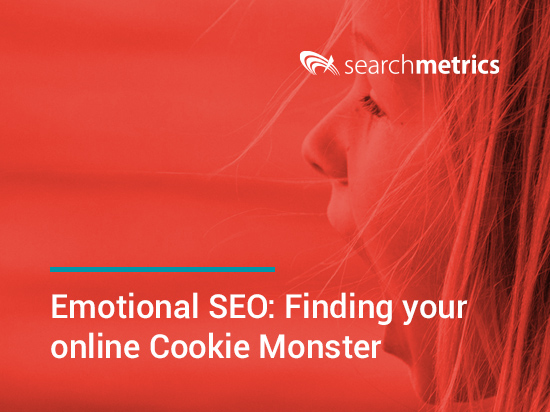
In Apple’s latest iPhone 6s ad, Sesame Street’s Cookie Monster becomes the perfect pitchmonster for the Siri voice assistant. He uses it to set a timer for (you guessed it) baking cookies, and then agonizingly waits while also having Siri play Jim Croce’s “Time in a Bottle”.
It’s emotional marketing at its best: For millions of Americans, the furry blue creature symbolizes happy childhood moments. The humorous tableau brings a smile to your face, yet it aims to sell stuff too. The spot highlights some of Siri’s useful functions and plants the idea that if the hands-free voice assistant can understand Cookie Monster’s gravelly voice, yours should be a snap.
https://www.youtube.com/watch?v=CCbWyYr82BM
The best ads – those we tend to remember long after your favorite team wins the Super Bowl – almost always reach viewers on an emotional level.
Now consider your digital footprint. In an age where Google is increasingly placing a premium on original website content in ranking search results, creating an emotional connection with potential customers is not only recommended but required.
Meeting Google’s rules about keywords and technical SEO is table stakes. Upping the ante against all your SEO-compliant competitors requires understanding your target market and getting more creative about connecting to them.
If there’s one thing consumers like to do, it’s windowshop. With the rise of mobile search, they’re increasingly doing it online. Consulting firm PriceWaterhouseCoopers put it simply in its 2015 global retail report: “As online shopping continues to grow at the expense of store visits, the premium in the future will be on creating unique, brand-defining experiences that keep customers coming back— whatever the channel.”
And if there is only one figure that should be a wakeup call for online marketers, it’s 56. That’s the percentage of shoppers who said the first thing they do when researching a purchase is use a search engine, the PwC global survey of consumers found. But they’re going to make near-instant decisions about just which of many online storefronts to enter.
Let’s take the furniture category, with a shopper thinking of purchasing a new couch. A Google search returns organic and paid results for local furniture stores, department stores and online-only shops like Overstock.com and Wayfair.com. In fact, a quick search turns of a whopping 230 million (!) results.
Wayfair, a $3 billion market cap online retailer, has a SEO visibility score of 449,000 and appears fourth in the SERP, thanks in part to judicious use of keywords “Sofas, Couches & Loveseats | Wayfair – Find the Perfect Sofa.”

In comparison to Overstock, a $363 million retailer with a higher SEO visibility score of 611,000, Wayfair already appears to be thinking of how to stand out by using unique keywords such as “Find the Perfect Sofa.” If you were to type that only phrase into a query, Wayfair is the only furniture retailer returned in organic results, placing fifth in the SERP behind articles on how to find and choose the perfect sofa.
Yet Wayfair goes a step further in understanding the psychology of its shoppers once they click through. Using data that finds its buyers are parents with children under 12 years old, Wayfair takes an unusual tack in an accompanying buyers tips section at the bottom shopping pages:
“When purchasing a couch, the most important factor to keep in mind is the sofa fort-ability of the couch in questions. Price, size and color may also be taken into consideration, but only as secondary features to the sofa fort potential of the piece you’re looking into. As such, we have compiled several sofa fort designs that you may keep in mind while searching for your new couch:”


What better way to turn what for many is a harrowing and daunting shopping experience into something that delights and entertains? What’s more, Wayfair has created something that’s likely to be shared, either on social media pages, or the old-fashioned way, by shoppers with their friends. Not surprisingly, Wayfair’s furniture site has an unusually high social visibility score on Facebook compared to its peers.
Now consider GitHub. The company had another emotional problem to solve: confusion. Just describing to the uninitiated that GitHub is an “online software collaboration community built on the open source Git project” is a mouthful. Getting them to sign up and pay for hosting and managing open source software development and fostering collaboration between individuals, communities and businesses is another thing entirely.
Its elegant solution was to co-opt the popular How-to guide format for its own purposes. Using simple subjects, from “Understanding the GitHub flow” to “Making your Code Citable,” GitHub breaks down complex issues into step-by-step interactive tools — essentially creating “GitHub for Dummies” online guidebooks.
While the privately held startup doesn’t reveal revenue, the data shows the change is driving more online visibility:

Wrapping up, emotional SEO means out-of-the-box thinking about delivering quality content to your web pages and connecting psychologically with potential customers to drive sales and increase SEO visibility.
Apple’s Steve Jobs once controversially said about creating products that “a lot of times, people don’t know what they want until you show it to them.” In the SEO world today, people shopping online generally know what they want. The trick is creating enough of an emotional connection with your customers to drive browsing from casual to conversion.
